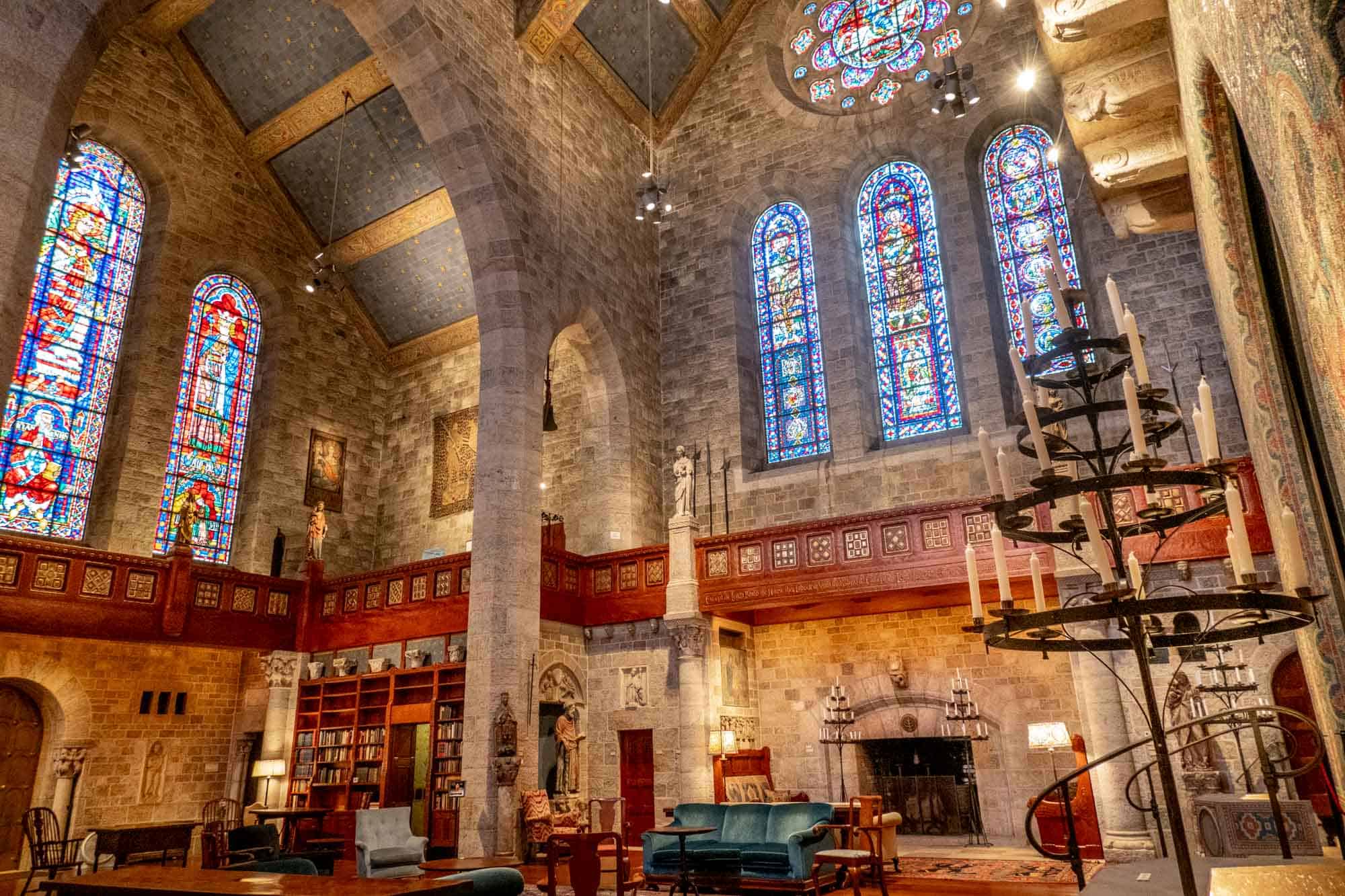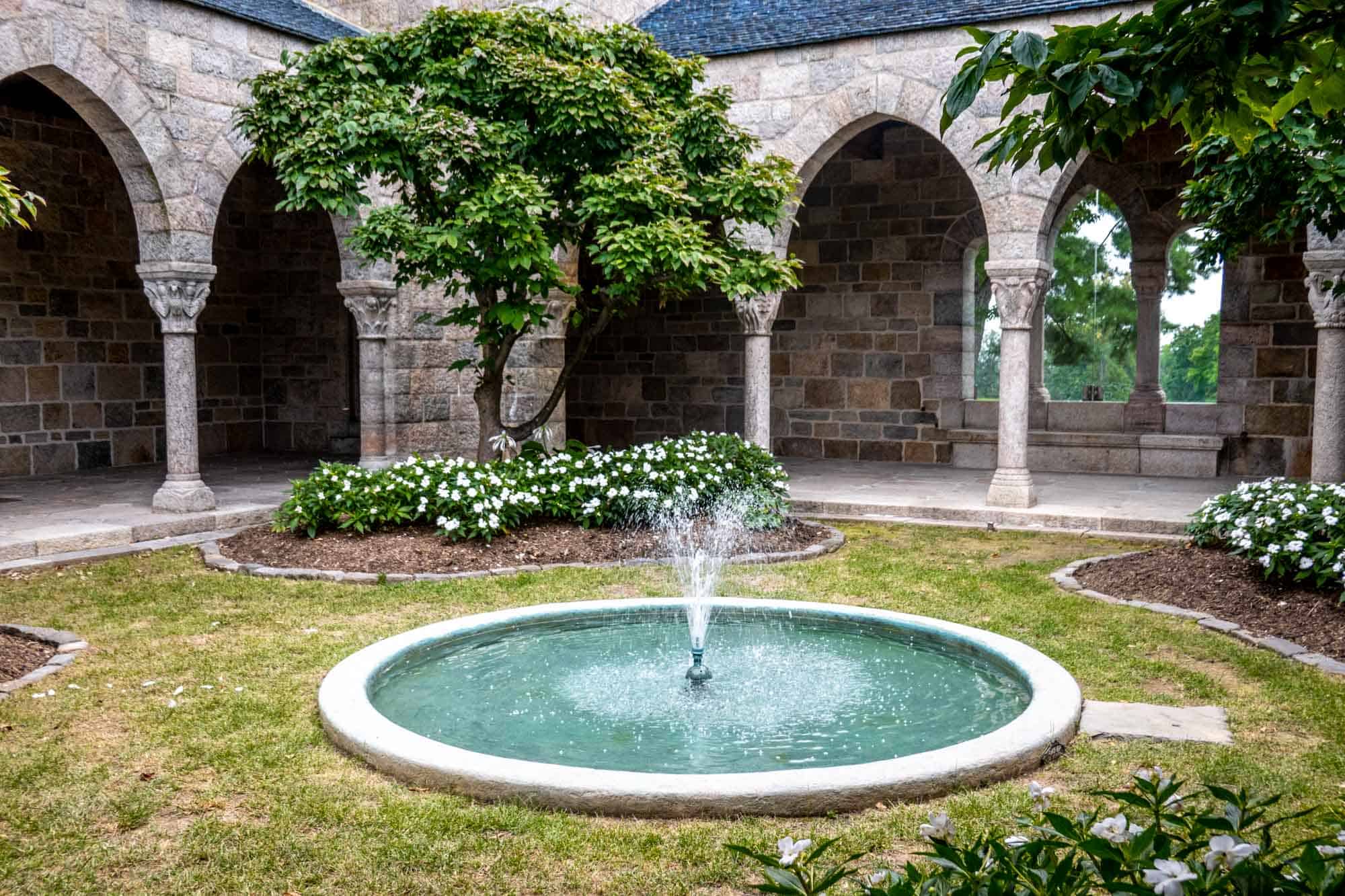Glencairn Museum in Bryn Athyn looks more like it belongs in the European countryside than in the suburbs of Philadelphia. This striking museum, which was once one of the grandest homes in Montgomery County, holds 1000-year-old treasures from around the world behind its granite walls.

The Museum showcases religious art from a broad range of cultures and time periods, including ancient Greek and Roman pieces, ancient Egyptian jewelry, medieval Christian carvings and stained glass, and Native American, Islamic, and Asian pieces. In total, there are about 8000 artworks. A portion of them is on display throughout Glencairn.

History
Glencairn was built as the home of the Pitcairn family just 15 miles from Philadelphia. The castle-like mansion is one of several buildings that are part of Bryn Athyn. The religious community was founded in the 1800s by members of the New Church, a Christian denomination based on the teachings of Emanuel Swedenborg.
Built by millionaire businessman Raymond Pitcairn and his wife Mildred, the grand home took 11 years to finish due to a slow down caused by the Great Depression. When it was finally completed in 1939, the medieval Romanesque structure was 90 rooms spread across 10 floors.

The mansion was more than enough room for the 11 Pitcairn family members, all of Raymond’s creative architectural ideas, and all the art he had collected in the 1920s and ’30s. The collection spanning continents, dynasties, and centuries had a home.
The family lived in the luxurious home for 40 years. Following Mildred’s death in 1979 (Raymond died in 1966), the mansion and its collections became the property of the New Church. In 1978, Glencairn was added to the National Register of Historic Places.
Mansion and collection
One of the most unique museums near Philadelphia, Glencairn is impressive from the moment you see it. With a nine-story tower, fountain-accented cloisters, sleeping porches, and more, it’s clear this place is remarkable before you even step inside. Even the exterior walls are full of carvings that have religious and familial meanings.

Once inside, the extraordinary artistic touches continue. You’ll see niches covered in mosaic alongside elaborate metalwork. There is a family chapel with Medieval-inspired art and plenty of flourishes throughout the rooms.
Many of the museum’s galleries—each focused on a different region or culture—are in what were the family’s bedrooms. The Egyptian gallery focuses on mythology, mummification, and the afterlife while the Greek and Roman galleries focus on the role of religion in people’s everyday lives. There is also lots of stained glass, carvings, and documents highlighting the beliefs of different religions around the world.

The centerpiece of Glencairn Museum is the Great Hall. The enormous room with a star-speckled vaulted ceiling has numerous Medieval sculptures, a mosaic arch, paintings, and walls covered in stained glass.

Some of the pieces in the Hall are priceless, ancient art while others were created for the space by Bryn Athyn artists. Somehow, they all look like they simply belong in this giant living room with books and velvet chairs and couches—like the family will arrive at any time to relax by the fire and talk about their day. It’s a fascinating space where museum meets home.
Visiting
The museum is temporarily closed through Fall 2023 for infrastructure work on the 83-year-old building. Virtual tours are available on the website.
While the museum is closed, several of the stained glass windows and decorative objects are on loan to the Philadelphia Museum of Art.
